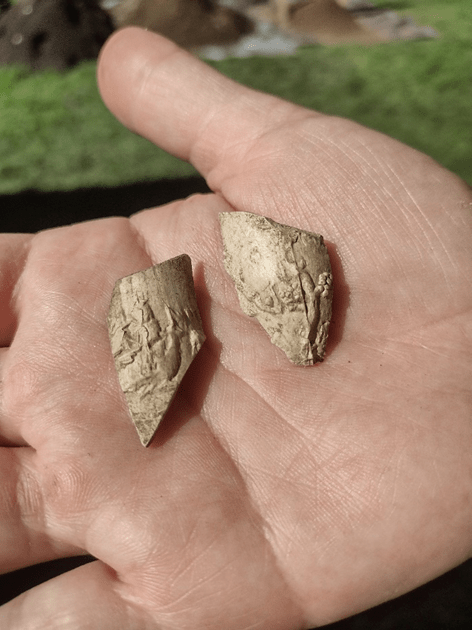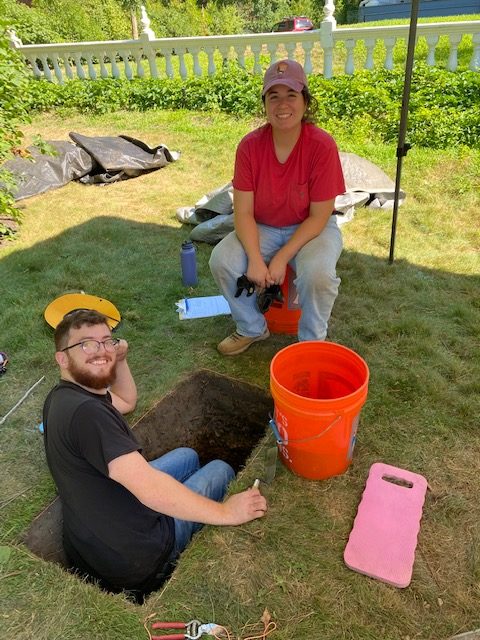Sharing About Archaeology
Written by: Eva Parra
I was lucky enough to participate in the archeological dig at Longfellow House Washington’s Headquarters National Historic Site in Massachusetts. I worked with the Northeast Archeological Resources Program (NARP) and volunteers to excavate in the front yard, investigating areas of interest found via ground penetrating radar (GPR) and other geophysical survey tools. GPR is a technology that sends radio waves into the ground and measures the reflecting waves to create images that a trained person can interpret as voids or subsurface objects. I actually got to see GPR in action while I was there and get an idea of what we were excavating looks like through GPR.
During my time there, we uncovered cellar walls from an earlier structure that had partially been discovered before by a previous excavation, as well as potential garden paths. Most of the artifacts we found were pieces of brick and mortar, but amongst those, we found ceramics and pieces of clay pipes like the ones pictured. These ones are particularly exciting because of the designs on them! My favorite is the ship, it reminds me of something out of National Treasure.

Pieces of clay pipe, one with the image of a ship and one with a botanical design.
I also got to connect with the ACE member at Longfellow, Amanda Womack, and learn about and see the exhibit she designed about the earlier excavation at Longfellow. It was so much fun and an amazing opportunity to connect with many different amazing people!

Ian Villamil (left) and myself (right) excavating a 0.5 m by 1 m unit at Longfellow